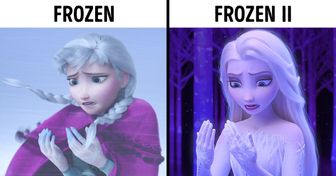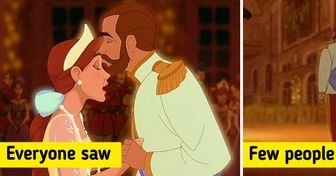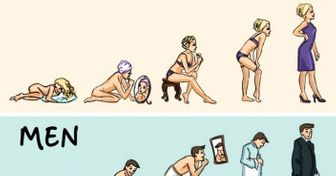I get paid over $180 per hour working from home with 2 kids at home. .....

It’s true that you shouldn’t believe everything that you hear, and history is no exception. Many years of studies and scientific developments have helped us to find the answers to most of the questions we used to have in the past. Nevertheless, there are still some mysteries and myths that will remain unanswered until proven otherwise.
We at Bright Side jumped into the textbooks to find out the stories behind the most common history myths we were told in middle school. We invite you to answer “true or false” to the following statements and test your knowledge. Were you tricked by history?
Even though we wanted this story to be true, unfortunately, it’s not. For many years it was believed that Anastasia, the daughter of the last Russian tsar, escaped during the assassination of her family. But a DNA test done in 2007 identified her body in the scene.
Movies were made about this myth and many women claimed to be the princess, like Anna Anderson, who was the best imposter and whose story was almost credible.
This quote has made history but it’s attributed to the wrong person. It was believed that around 1789, Marie Antoinette said the famous quote, “Qu’ils mangent de la brioche,” (let them eat cake) which gave her a bad reputation among the people for the negative connotation, and it ignited the French Revolution.
In 1766, Jean-Jaques wrote his “confessions,” quoting those words to a “great princess” who was believed to be Marie Antoinette. However, at that time, she was around 10 years old and it is believed that the famous quote actually belongs to Marie-Thérèse, the Spanish princess and wife of King Louis XIV.
Electricity was well known around 1752 when Benjamin Franklin carried out his kite experiment. What he intended was to prove the electrical properties of lightning. Also, it’s a myth that he had his kite struck by lightning. He flew the kite, proving the charge of the accumulated electricity in the air, not directly from a lightning strike. Otherwise, the story would’ve been very different for Ben Franklin.
The book, Second Book of Marvels, by Richard Halliburton, published in 1938, stated that the Great Wall of China was visible from the moon, being the only structure made by humans that could be seen from there. Nevertheless, this is a myth, debunked. The series of fortifications is a maximum of 30 feet wide, and from a distance of 239,000 miles away, so it’s basically impossible to be visible to the naked eye from the moon.
Would Jack have had the opportunity to survive? We don’t have that answer. But what we do know, thanks to the new evidence, is that it was not an iceberg that was solely responsible for the Titanic’s demise, it was a combination of negligence. For 3 weeks, there was a fire in the ship’s hull that went unnoticed. By the time of the collision, it was too late to reverse the damage.
When movies or cartoons describe Vikings, the most common element used is a horned helmet. But in real life, it turned out to be different because there’s no evidence that horned helmets ever existed. There’s not even a mention of them in the Viking writings.
As it might be a bad idea to wear horns for combat, it’s believed that this misconception originated from an 1876 production of Richard Wagner’s cycle music drama, “Der Ring des Nibelungen.”
The myth used as an excuse for those failing math class, claiming to be like Albert Einstein, is now debunked. Although it is true that he failed college entrance examinations, it was not because he was bad at math but because of his inability to master French. At the age of 15, Einstein already mastered the hardest subjects, like mathematics, physics, and algebra.
Commonly represented as a short character, Napoleon Bonaparte actually was of average stature. He stood at around 5’5’’, which equals 1.69 meters approximately, being in the average of an adult male’s height of that period. Who’s responsible for this misconception, you ask? The British cartoonist, James Gillray, who satirized the image of Napoleon and his “short stature.”
He did chop off the lower part of his ear, but not the whole ear, as some of us used to think. When living with Gaugin in Arles working together, Van Gogh had an episode of dementia, which caused him to threaten his friend with a knife and then cut himself on the lobe of his ear.
Building the Giza pyramids was a hard task, but certainly, it didn’t belong to slaves. The people behind these architectural wonders were actually highly-qualified workers and engineers. It was considered an honor to labor on such an important project. Workers were paid with high-quality food and intentionally-built dormitories that, if they were slaves, would never have such privileges.
Do you know any other myths that needs to be debunked? Let us know which ones in the comments!
I get paid over $180 per hour working from home with 2 kids at home. .....












